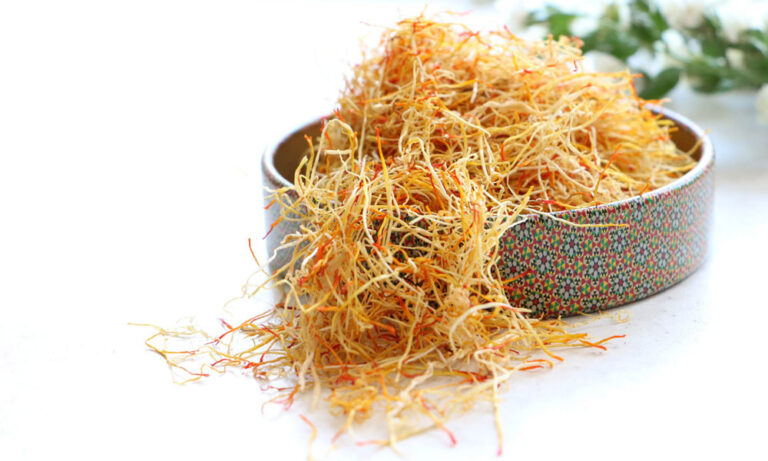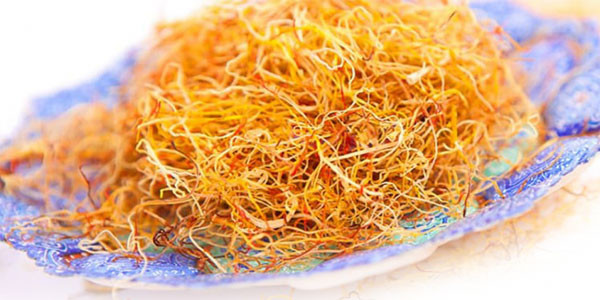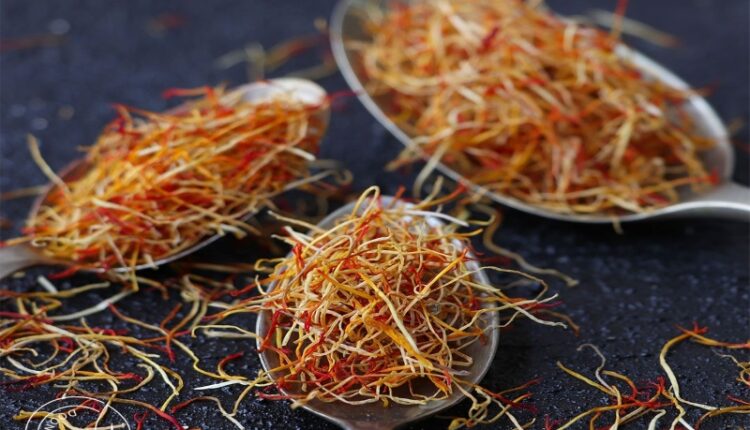Benefits of Saffron Root
Saffron is a plant with amazing properties and a delightful fragrance and taste that we all desire to consume despite its high price. However, white saffron or saffron root also has remarkable properties.
The benefits of the saffron root are numerous. Still, due to the absence of the red pigment crocin, which creates a beautiful color in foods, it cannot produce that same color and therefore has a lower price than red saffron.
In the following text, we will discuss the properties of saffron root, its applications in various industries, and its harvesting and purification process.
Introduction to Saffron and Its Root:

Contrary to its name, this part of saffron is not a root or in the soil. From a scientific point of view, it is a part of the plant called corm. Each complete saffron flower has six purple petals, three yellow flags, and three or sometimes more red stigmas.
At one end of the flower, a white corm of the plant can be seen, commonly called saffron root by the general public. The agent of saffron propagation is the saffron bulb or onion, which Iranians taught to other people worldwide. Therefore, the agent for producing the highest quality saffron is the bulb protected by a brownish-purple shell.
Check out our article on the Saffron And Colds (How To Use) 2023
Methods of Cleaning Saffron:
There are two methods for filling saffron . In the first method, the plant’s red stigma and white corm are not separated. After separating them, they can be skillfully twisted from the flower to form saffron strands.
In the second method, the two red and white parts must be separated after separating the stigma and its attached corm from the plant. The red part is called gemstone saffron, and the white part is called saffron root.
Collection Method:
After cleaning saffron with either of the methods, the separated parts are dried. In this stage, saffron strands or threads are separated into white and red parts. The red part is the saffron stigma, a common type in the market. However, the white part now separated in both methods is the saffron root (note that the saffron root obtained in the second method is shorter than the first method).
Fraudulent Sales:
Saffron root has a lower price and fewer properties compared to gemstone saffron, and this has led to fraud in the market. Some dealers dye saffron root with red chemicals to sell it instead of red saffron for higher profits.
Saffron root is not only harmless but also has remarkable properties. However, its added chemical color has a negative effect on human health.

benefits of Saffron Root
The properties of the saffron root are indeed fewer than red saffron due to the absence of a substance called crocin (which creates the red color). However, the saffron root also has many properties, some mentioned below.
- Mood booster
- Medicinal and therapeutic properties
The medicinal and therapeutic properties of the wild saffron root are undeniable. One of its properties is the treatment of mood disorders such as depression. The happiness and vitality it brings to an individual can be used to treat depression.
Preventing anxiety and nervous disorders are other properties of the saffron root. Prostate cancer and rheumatism treatment are also among the discovered uses of the saffron root. Saffron root contains a very small amount of crocin.
Crocin plays a role in preventing eye diseases, diabetes, and Alzheimer’s and improves memory performance. It should be noted that although saffron is beneficial for health, it can be harmful in special conditions and large quantities.
Consumption of concentrated saffron in the first trimester of pregnancy is prohibited. Consuming concentrated saffron in the first trimester of pregnancy increases the risk of miscarriage due to the increased prostaglandin in the mother’s uterus. However, consuming small amounts of saffron in food and other edibles not only does not harm the mother but also helps the baby’s growth and makes the mother’s childbirth easier.
Saffron Root benefits
Mothers should be very cautious in consuming saffron in the first trimester of pregnancy, but in the second trimester, they are allowed to consume up to 1 grams of saffron.
- Eliminating bad breath
- Reducing individual’s obsession
- Containing vitamins
Vitamins C, B1, B2, and B6 are the vitamins in saffron root’s properties. - Presence of minerals in the saffron root
The mineral elements in saffron root include iron, manganese, and calcium, double the properties of white saffron root. - Skin radiance
- Strengthening the immune system
- Enhancing sexual performance
- Beneficial for organs such as the stomach and bladder
- Improving heart and kidney function
Saffron onion also has its properties. Its properties are eliminating ear swelling, treating eye infections and inflammation, pain relief, anti-inflammatory, sleep aid, and reducing anxiety and stress.
Application of saffron root
The application of saffron root can be predicted based on its properties. Its application in the pharmaceutical industry for treating and preventing diseases is one of the important properties of the saffron root.
Saffron root is suitable for Iranian home-cooked meals due to its extraordinary aroma and fragrance to foods such as rice dishes, stews, soups, desserts, pastries, and syrups.
In addition to the properties of saffron root, using saffron root in herbal teas and teas can also provide us with a pleasant aroma and fragrance. The properties of saffron root in herbal teas are less than those of red saffron tea, but they are still full of properties.
In addition to the pharmaceutical industry, the saffron root is also used in the chocolate industry and the production of cosmetics and hygiene products.
How to use saffron root
The best way to use a saffron root that preserves its properties is by grinding it. To use saffron root in powder form, place it on gentle or indirect heat to make it brittle, then grind it until it becomes a fine powder.
Like other spices, it is better to grind saffron root fresh, as its aromatic molecules escape, and with grinding, the particles of saffron root are more exposed to air molecules, including oxygen, which can reduce its properties.
Conclusion
We have all sought ways to prevent or treat diseases throughout our lives. The use of herbal plants and plant-based chemical medicines has greatly helped humans and the food and pharmaceutical industries in this regard.
Saffron is one of these plants with special properties in each of its parts, including the stigma, style, corm, and leaves, and none of these parts are insignificant.
The stigma and style of this plant are among the best-selling parts of saffron, which are separated from the flower, cleaned, dried, and then reach the consumers after a time-consuming process.


